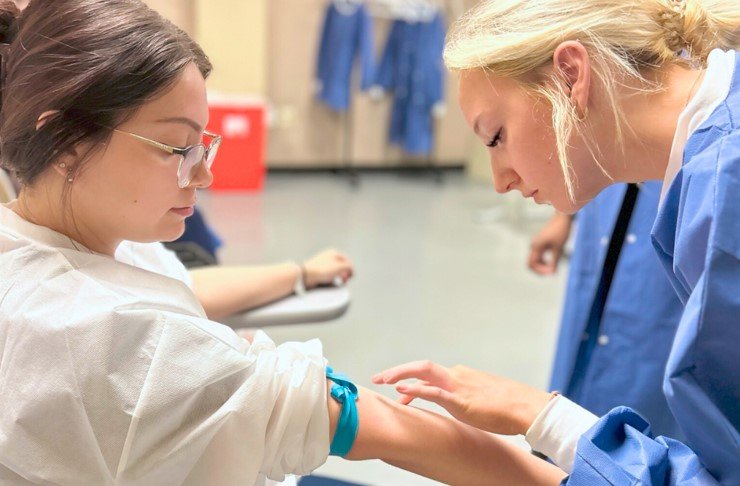Improving Integration and Interoperability of Medical Equipment with EHR Systems in US Hospitals
Summary
- Hospitals in the United States are implementing various strategies to improve the integration and interoperability of medical equipment with Electronic Health Records systems.
- Standardization of data formats and communication protocols is crucial for seamless integration between medical equipment and EHR systems.
- Interoperability enhances patient safety, facilitates clinical decision-making, and improves overall healthcare delivery in hospitals.
-
Enhanced Patient Safety: Seamless integration allows for real-time monitoring of patients and immediate access to critical data, enhancing patient safety and improving outcomes.
-
Facilitated Clinical Decision-Making: Integrated systems provide Healthcare Providers with comprehensive patient information, enabling informed clinical decision-making and personalized care.
-
Improved Healthcare Delivery: Interoperability streamlines workflows, reduces duplication of data entry, and promotes collaboration among healthcare teams, leading to more efficient healthcare delivery.
Introduction
In the modern healthcare landscape, hospitals are increasingly reliant on medical equipment and Electronic Health Records (EHR) systems to provide quality patient care. The integration and interoperability of these two essential components play a significant role in enhancing patient safety, improving clinical efficiency, and optimizing healthcare delivery. In the United States, hospitals are implementing various strategies to improve the seamless connection between medical equipment and EHR systems.
Challenges in Integration and Interoperability
Despite the numerous benefits of integrating medical equipment with EHR systems, hospitals in the United States face several challenges in achieving seamless interoperability. Some of the key challenges include:
Non-Standardized Data Formats
Medical equipment often uses proprietary data formats that may not be compatible with EHR systems, leading to data silos and interoperability issues.
Communication Protocols
Different medical devices may use different communication protocols, making it challenging to establish seamless communication between the equipment and EHR systems.
Vendor Lock-In
Hospitals may face vendor lock-in situations where they are limited in their ability to integrate medical equipment from different vendors with their EHR systems, leading to interoperability challenges.
Strategies for Improving Integration and Interoperability
To overcome the challenges associated with integrating medical equipment with EHR systems, hospitals in the United States are implementing various strategies:
Standardization of Data Formats
Standardizing data formats across medical equipment and EHR systems is crucial for ensuring seamless integration and interoperability. By adopting standardized formats such as HL7 and DICOM, hospitals can facilitate the exchange of data between different systems.
Implementation of Interoperability Standards
Hospitals are increasingly embracing interoperability standards such as FHIR (Fast Healthcare Interoperability Resources) to enable the seamless exchange of data between medical devices and EHR systems. These standards help in harmonizing data exchanges and promoting interoperability across healthcare organizations.
Vendor Collaboration and Partnerships
Hospitals are collaborating with medical equipment vendors to enhance the compatibility of devices with EHR systems. By working closely with vendors, hospitals can ensure that new equipment is designed with interoperability in mind, reducing integration challenges.
Training and Education
Providing training and education to healthcare staff on the importance of integrating medical equipment with EHR systems is essential for successful implementation. Hospitals are investing in training programs to ensure that staff are proficient in using integrated systems effectively.
Data Governance and Security
Establishing robust data governance policies and ensuring data security are critical for the seamless integration of medical equipment with EHR systems. Hospitals are implementing stringent security measures to protect patient data and ensure compliance with regulatory requirements.
Benefits of Integration and Interoperability
The integration and interoperability of medical equipment with EHR systems offer several benefits to hospitals in the United States:
Conclusion
Integration and interoperability of medical equipment with EHR systems are essential for enhancing patient care, improving clinical efficiency, and optimizing healthcare delivery in hospitals. By implementing strategies such as standardizing data formats, embracing interoperability standards, and fostering vendor collaborations, hospitals in the United States can overcome the challenges associated with integration and interoperability. The seamless connection between medical equipment and EHR systems not only benefits patients but also empowers Healthcare Providers to deliver high-quality care in a digital healthcare environment.

Disclaimer: The content provided on this blog is for informational purposes only, reflecting the personal opinions and insights of the author(s) on the topics. The information provided should not be used for diagnosing or treating a health problem or disease, and those seeking personal medical advice should consult with a licensed physician. Always seek the advice of your doctor or other qualified health provider regarding a medical condition. Never disregard professional medical advice or delay in seeking it because of something you have read on this website. If you think you may have a medical emergency, call 911 or go to the nearest emergency room immediately. No physician-patient relationship is created by this web site or its use. No contributors to this web site make any representations, express or implied, with respect to the information provided herein or to its use. While we strive to share accurate and up-to-date information, we cannot guarantee the completeness, reliability, or accuracy of the content. The blog may also include links to external websites and resources for the convenience of our readers. Please note that linking to other sites does not imply endorsement of their content, practices, or services by us. Readers should use their discretion and judgment while exploring any external links and resources mentioned on this blog.

